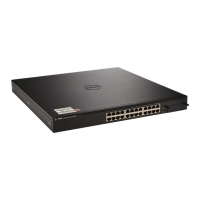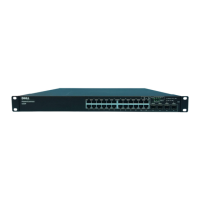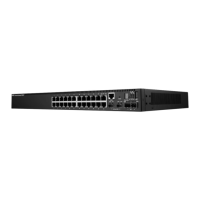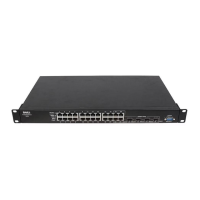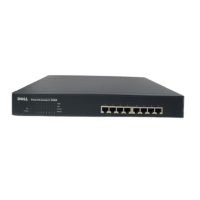Configuring System Information 263
Target N a me — Identifies the iSCSI name of the iSCSI target. The name can be statically configured;
however, it can be obtained from iSNS or from sendTargets response. The initiator MUST present both
its iSCSI Initiator Name and the iSCSI Target Name to which it wishes to connect in the first login
request of a new session or connection.
Remove — To remove an iSCSI target from the table, select the Remove option and click Apply
Changes.
Adding an iSCSI Target
1.
Open the
iS CSI Targets Table
page.
2.
Click
Add
.
The
Add
iSCSI Table
page displays:
Figure 6-130. Add iSCSI Target
3.
Define the
relevant
fields.
4.
Click
Apply Changes
.
5.
The target is added to the
iSCSI targets table
, and the device is updated.
Viewing the iSCSI Targets Table and adding Static iSCSI Targets Using CLI Commands
For information about the CLI commands that perform this function, see the following chapter in the
CLI Reference Guide
:
• iSCSI Commands.
iSCSI Sessions
Use the iSCSI Sessions page to view information about the iSCSI sessions that the switch has
discovered. An iSCSI session occurs when an iSCSI initiator and iSCSI target communicate over one or
more TCP connections. The maximum number of iSCSI session is 192.
To access the iSCSI Sessions page, click System → iSCSI → Sessions in the navigation tree.
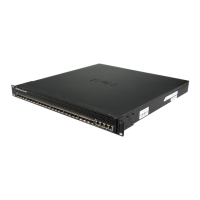
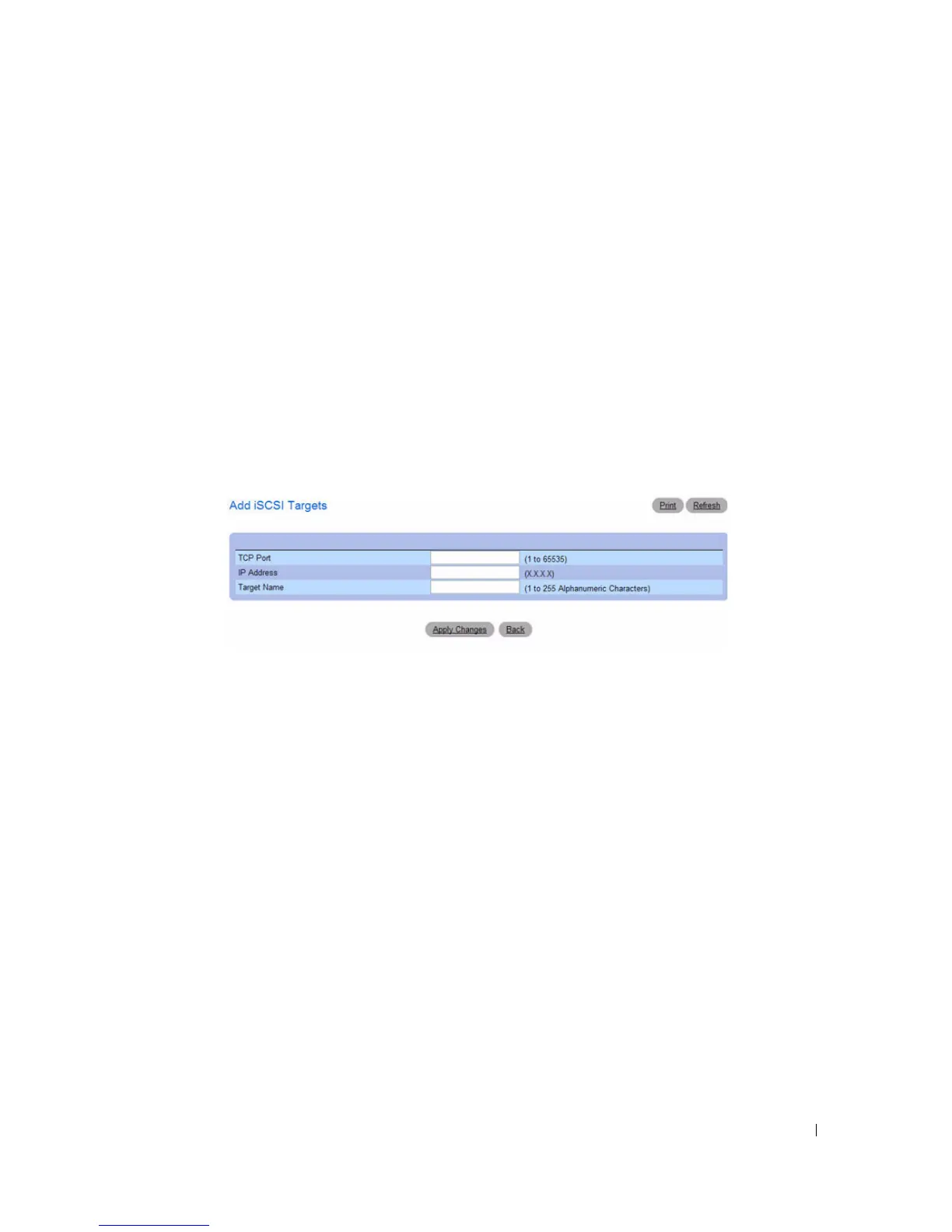